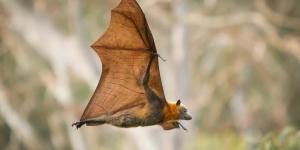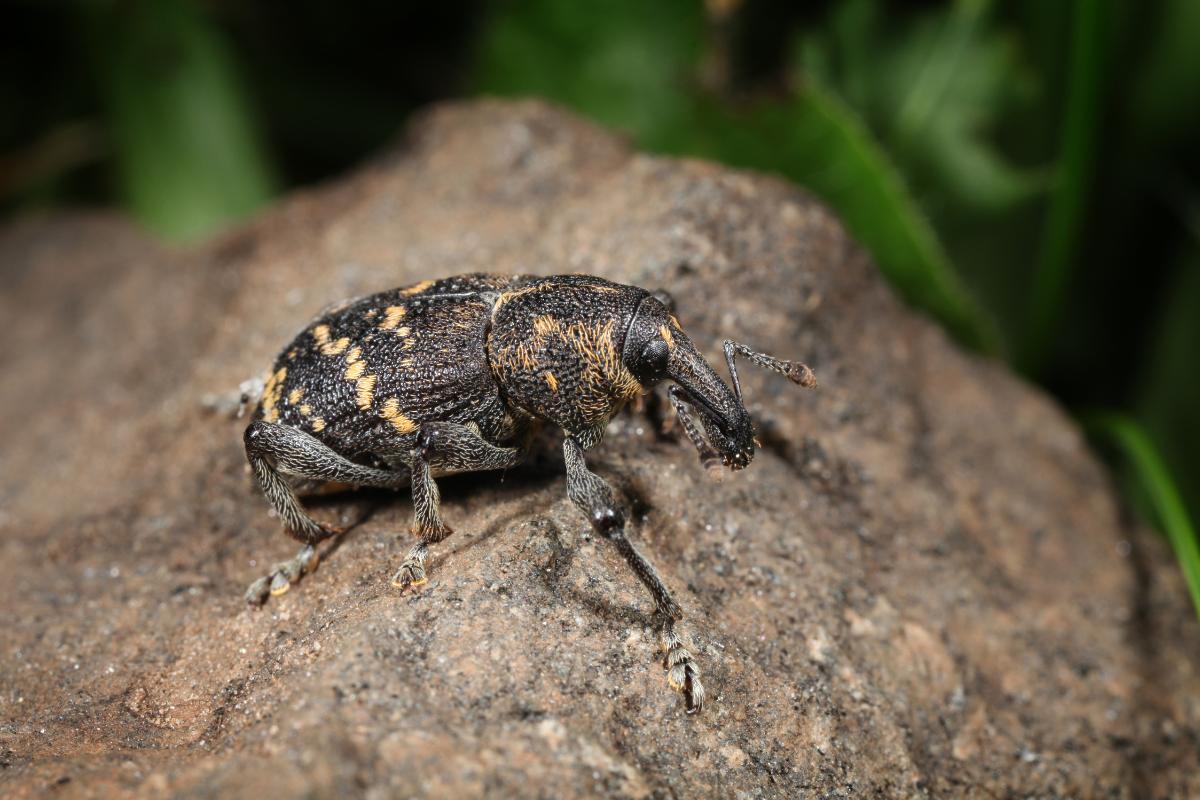Where Do Beetles Live?


Beetles reign supreme as the most diverse insect group on Earth, boasting over 350,000 identified species and likely millions more that remain undiscovered. It is no surprise that adaptability allows them to thrive in nearly every terrestrial habitat, from tropical rainforests to scorching deserts, frigid mountains to bustling cities. Not only that, but beetles are also essential players in maintaining healthy ecosystems around the world.
In the following AnimalWised article, we will explore where do beetles live, exploring their diversity and global distribution.
Beetle distribution and anatomical adaptations
Within the teeming insect kingdom, few groups reign supreme in diversity and adaptability like Coleoptera, the order encompassing the diverse group known as beetles. Beetles are found in various of habitats across the globe, showcasing their remarkable adaptability to diverse ecosystems. Before delving into specific habitats, let's explore the adaptations that enable beetles to thrive in such varied environments.
Unlike many insects, beetles sport a distinctive "suit of armor" made of chitin, an external exoskeleton. This versatile structure acts as a shield against predators, harsh temperatures, arid conditions, and dehydration. Beyond its defensive role, the exoskeleton offers crucial attachment points for muscles, enabling the diverse movements and behaviors observed in beetles.
While not all beetles possess wings, numerous species conceal intricately-designed flight mechanisms beneath their hardened forewings, called elytra. When needed, these wings unfold, aiding in dispersal, mate-seeking, and evading predators. Additional adaptations, such as gliding and diving flight, further underscore the remarkable versatility of this structure.
Each beetle species has its own set of specialized appendages suited to its lifestyle, ranging from the strong mandibles of scarabs to the long snouts of weevils. These mouthparts, adapted for chewing, piercing, or sucking, effectively unlock a wide range of food sources. Moreover, modified legs enable beetles to engage in activities such as digging, swimming, climbing, and clinging, enhancing their capability to navigate and utilize various habitats.
It is important to note that, beetles also showcase other fascinating adaptations that go beyond just their physical structure. In fact, some species possess chemical defenses, releasing noxious odors or even producing their own insecticides. Others excel at camouflage, seamlessly blending into their environment. Even social behaviors emerge within some beetle communities, with complex societies featuring dedicated tasks and communication systems.
Learn more about the anatomy of beetles in this other article.
Beetle habitat and ecological importance
As mentioned earlier, beetles inhabit a wide variety of environments globally, each with distinct adaptations that contribute to their survival and ecological roles. Let us take a closer look at where do beetles live and how they have adapted to that specific environment:
Tropical forests
Beetles in tropical forests contribute to decomposition and nutrient cycling, facilitating soil formation and supporting complex food webs critical for ecosystem biodiversity. Examples include the Titan beetle (Titanus giganteus) with its enormous size, aiding in its survival by deterring predators, and the Dung beetle (Scarabaeus sacer), which utilizes its strong forelegs and dung ball rolling for nutrient recycling.
Boreal and temperate forests
In boreal and temperate forests, beetles aid in decomposing dead wood and other organic matter, recycling nutrients and promoting forest regeneration and health. Beetles thrive on tree bark, dead wood, and the forest floor, adapting to cooler climates. The Bark beetle (Dendroctonus ponderosae), for example, has a specialized body shape that allows it to bore into tree bark, while the Stag beetle (Lucanus cervus), with its mandibles, feeds on decomposing wood, playing a vital role in the nutrient cycle of these forests.
Grasslands
Grassland beetles are key in controlling pest populations and recycling nutrients through their predatory and dung-processing activities, crucial for maintaining soil health and ecosystem balance. This is why, grasslands support a rich beetle diversity, including ground beetles (Carabidae), dung beetles (Scarabaeidae), and ladybugs (Coccinellidae). The Fiery searcher beetle (Calosoma scrutator) and the Bombardier beetle (Brachinus sp.) are adept predators.
Deserts
Desert beetles demonstrate remarkable survival adaptations, contributing to nutrient cycling and decomposition, crucial for sustaining life in arid conditions. The Namib Desert beetle (Stenocara gracilipes), renowned for its moisture-harvesting ability, and the Darkling beetle (Eleodes armata), which avoids heat stress through behavioral adaptations, exemplify survival in harsh conditions.
Aquatic environments
Aquatic beetles fulfill essential roles within aquatic ecosystems, functioning as both predators and prey in the intricate food web. Their participation in nutrient cycling and energy transfer helps maintain the ecological balance of water bodies. Aquatic beetles, such as the Diving beetle (Dytiscus marginalis) and the Whirligig beetle (Gyrinus sp.), showcase specialized adaptations suited for their aquatic lifestyle. These adaptations include agile swimming capabilities and air storage mechanisms that enable them to dive efficiently, demonstrating their remarkable ability to thrive in aquatic environments and contribute to the dynamic processes within these ecosystems.
Urban environments
In urban environments, beetles play crucial roles in decomposing organic matter, thereby supporting nutrient cycling and maintaining soil health in green spaces.
Additionally, they can serve as valuable indicators of environmental changes within urban areas. Beetles utilize various urban landscapes such as gardens, parks, and green spaces for shelter and foraging. Species like the Red flour beetle (Tribolium castaneum) and the Japanese beetle (Popillia japonica) are particularly adept at adapting to human-modified environments, underscoring the remarkable versatility and adaptability of beetles to urbanized settings.
Soils
Beetles dwelling in soil play vital roles in maintaining ecosystem health by promoting aeration, decomposition, and nutrient cycling. Their activities enhance soil structure and fertility, thereby supporting plant growth and overall ecosystem productivity. Soil serves as a critical habitat for a multitude of beetle species, including the Ground beetle (Carabus nemoralis) and the Rove beetle (Staphylinidae sp.), both of which play significant roles in decomposition and nutrient cycling through their subterranean behaviors.
Polar Regions
Beetles inhabiting polar regions, although exhibiting limited diversity, play crucial roles in nutrient cycling processes and contribute to the resilience of fragile polar ecosystems. These beetles have evolved unique adaptations to survive in extreme cold conditions. For instance, the Arctic beetle (Upis ceramboides) produces antifreeze proteins that prevent ice crystal formation within its body, allowing for activity at exceptionally low temperatures.
Have you ever wondered if beetles bite? Learn the truth by reading this other article.

How to get rid of beetles naturally
Beetles can sometimes become pests in our homes and gardens. Managing beetle populations without resorting to harsh chemicals is both environmentally friendly and beneficial for your health.
Here are some effective, natural strategies for controlling beetles and preventing their return.
1. Manual removal
The simplest way to deal with beetles is by manually removing them. This method is most effective in small infestations:
- Gloves and bucket method: wear gloves and gently pick the beetles off plants or surfaces and drop them into a bucket of soapy water to eliminate them.
- Vacuuming: for indoor infestations, a vacuum cleaner can quickly collect beetles from floors, walls, and other surfaces. Be sure to dispose of the vacuum bag or contents in a sealed container outside your home.
2. Diatomaceous Earth
Diatomaceous earth (DE) is a powdery substance made from the fossilized remains of tiny, aquatic organisms called diatoms. It acts as a natural insecticide by dehydrating the beetles upon contact. Simple, sprinkle DE around the base of plants, near entry points in your home, and other areas where beetles are observed. Also, ensure the area is dry; DE loses effectiveness when wet.
3. Neem oil
Neem oil, derived from the seeds of the neem tree, is a natural insecticide that disrupts the life cycle of beetles, preventing them from maturing and laying eggs. Mix neem oil with water according to the package instructions and spray it directly on beetles and affected plants. Apply in the evening to avoid harming beneficial insects that are active during the day.
4. Essential oils
Certain essential oils, such as peppermint, eucalyptus, and cedarwood, can repel beetles. Create a spray by mixing a few drops of essential oil with water and a small amount of soap to help emulsify the oil. Make sure to spray around windows, doors, and other beetle entry points.
5. Regular cleaning
Keeping your home and garden clean can significantly reduce beetle attractions. Make sure to remove decaying wood, leaves, and other organic matter where beetles might breed and feed. Furthermore, do not forget to regularly inspect plants for signs of beetles and address infestations early.
Before you go, be sure to read this other article on the number of legs beetles have.

If you want to read similar articles to Where Do Beetles Live?, we recommend you visit our Facts about the animal kingdom category.
- Chung, A.Y.C., Eggleton, P., Speight, M.R., Hammond, P.M., & Chey, V.K. (2000). The diversity of beetle assemblages in different habitat types in Sabah, Malaysia . Bulletin of entomological research, 90(6), 475-496.
- De Vries, H.H., Den Boer, P.J., & Van Dijk, T.S. (1996). Ground beetle species in Heathland fragments in relation to survival, dispersal, and habitat preference . Oecologia, 107, 332-342.
- Fairchild, G.W., Faulds, A.M., & Matta, J.F. (2000). Beetle assemblages in ponds: effects of habitat and site age . Freshwater Biology, 44(3), 523-534.
- Galko, J., Dzurenko, M., Ranger, CM, Kulfan, J., Kula, E., Nikolov, C., ... & Zach, P. (2018). Distribution, habitat preference, and management of the invasive ambrosia beetle Xylosandrus germanus (Coleoptera: Curculionidae, Scolytinae) in European forests with an emphasis on the West Carpathians . Forests, 10(1), 10.
- Lassau, S.A., Hochuli, D.F., Cassis, G., & Reid, C.A. (2005). Effects of habitat complexity on forest beetle diversity: do functional groups respond consistently? Diversity and distributions, 11(1), 73-82.







